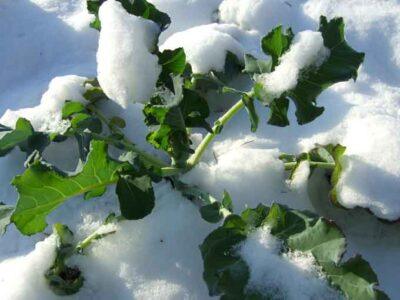When it comes to gardening, it really comes down to the zone in which you live. Within the United States, zones can range anywhere from 1A to 12B. This article will include information about year-round gardening based on the most common zones so if you are unfamiliar with your zone, check out this map [2].
Year-round gardening is obviously possibly in the warmer parts of the United States, but often folks in colder regions feel at a loss when fall arrives and frost follows. The good news is year-round gardening is possible in pretty much every zone, even in some bitterly cold regions of Alaska.
When it comes to extending your growing season, it really depends on your climate. People who live in a zone 3, for example, don’t really have to worry about a frost and just have to mulch or otherwise protect ground crops. Let’s take a look at some options for extending your season:
Greenhouses
Not surprising at all, greenhouses are the best (and depending on the zone, the only) way to garden year-round. Greenhouses are typically above ground structures that can really be any shape. Traditional greenhouses generally resemble a shed and a steel structure with glass. There are also hoop houses, which as the name suggests, are a greenhouse that is rounded due to the hoop ribs used.
Get Delicious, Nutrient-Dense Heirloom Seeds Here! [3]
The Internet is overrun with different greenhouse plans that vary from super easy models using plastic and PVC to traditional greenhouses with glass. You can really save money by building a greenhouse yourself, and hoop houses in particular are so easy that you really need no previous experience to make a successful one.
Here are a few links to DIY greenhouses that are suitable for year-round gardening:
- DIY Simple Mini Hoop House [4]
- Poly Hoop House [5]
- Build an Easy 5 x 5 Home Greenhouse for under $25 [6]
- Pallet Greenhouse [7]
Cold Frames
Cold frames work similarly to greenhouses but on a smaller scale. Traditionally, they are an open bottomed wooden box that is either fixed or moveable with an angled glass top. These work great in cold climates and are quite popular in European countries. More modern cold frames use greenhouse plastic rather than glass, making it just as effective but much safer in the event you fall on top of it.
Story continues below video
Due to their small size, cold frames are very efficient and are cheaper to make. In fact, DIY cold frames can cost close to nothing if you use recycled materials. You can even find old glass windows for cheap or free on websites like Craigslist or at yard sales. If you live in an especially cold climate you can use cold frames inside your greenhouse for more warmth.
Cloches
While not as popular, cloches can be useful for individual plants you want to protect from frost. These are also suitable for early spring when it’s still a bit chilly but you have seedlings ready to be planted outside. The term “cloche” is French for “bell,” as the cover traditionally used was a large bell-shaped jar. You can still find these large glass cloches for sale, and they still work quite well.
The glass cloches tend to be a bit expensive and of course, you can’t exactly make them yourself. There are other materials available and if you have mild falls and winters you might be able to get by with a milk jug converted into a cloche.
Here [10] is a great resource about cloches and how they are used.
Growing Indoors
Another option for year-round produce is to do some indoor gardening! Depending on the space you have you could use small containers or even raised beds with a water-proof plastic bottom. You’ll be limited to what you can grow indoors but it is still worthwhile. Some easy things to grow indoors would be small varieties of tomatoes, salad greens, root veggies and herbs. Actually, herbs are so easy to grow in containers that it’s pretty fun and useful to have them in your kitchen year-round.
You can also easily set up a system for sprouting and wheat grass. Sprouts and wheat grass are super nutritious and incredibly easy to grow. You can also grow mushrooms in extra space in your basement or even in an empty cupboard.
- 10 Best Herbs to Grow Indoors [11]
- Growing Wheatgrass Indoors [12]
- Sprouting Indoors [13]
- Growing Mushrooms Indoors [14]
- 16 Plants Ideal for Growing Indoors [15]
Year-round gardening is surprisingly easy when you have the right equipment. It’s safe to say that you can continue gardening in a greenhouse during winter in most every state in the US. Even if you can’t supply as much fresh vegetables come fall and winter, you certainly can cut your grocery bill.
Please share your own tips about growing year-round in the comment section below!
Get $600 Worth Of Survival Blueprints … Absolutely Free! [16]

